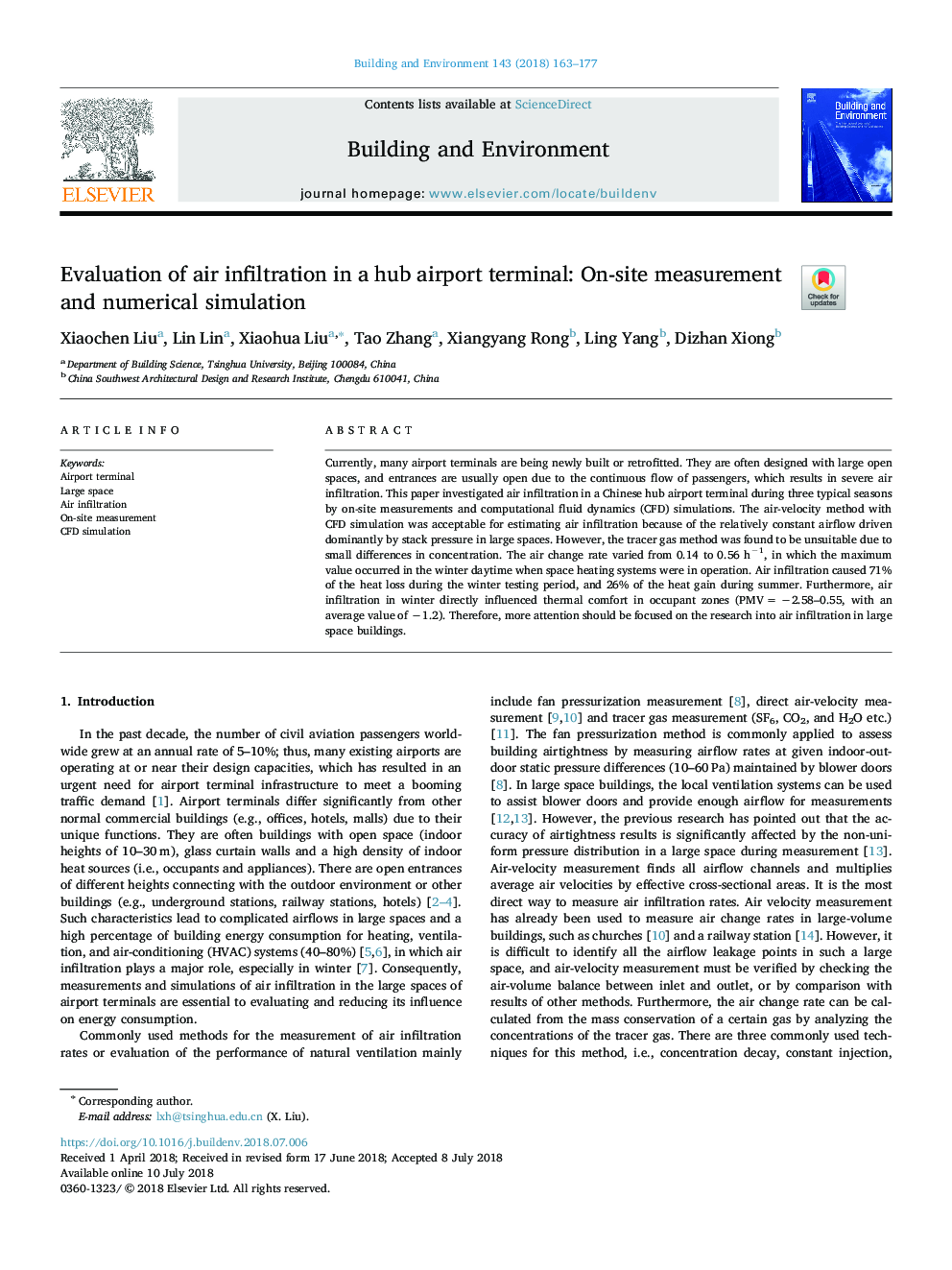| Article ID | Journal | Published Year | Pages | File Type |
|---|---|---|---|---|
| 6696514 | Building and Environment | 2018 | 15 Pages |
Abstract
Currently, many airport terminals are being newly built or retrofitted. They are often designed with large open spaces, and entrances are usually open due to the continuous flow of passengers, which results in severe air infiltration. This paper investigated air infiltration in a Chinese hub airport terminal during three typical seasons by on-site measurements and computational fluid dynamics (CFD) simulations. The air-velocity method with CFD simulation was acceptable for estimating air infiltration because of the relatively constant airflow driven dominantly by stack pressure in large spaces. However, the tracer gas method was found to be unsuitable due to small differences in concentration. The air change rate varied from 0.14 to 0.56 hâ1, in which the maximum value occurred in the winter daytime when space heating systems were in operation. Air infiltration caused 71% of the heat loss during the winter testing period, and 26% of the heat gain during summer. Furthermore, air infiltration in winter directly influenced thermal comfort in occupant zones (PMVâ¯=â¯â2.58-0.55, with an average value of â1.2). Therefore, more attention should be focused on the research into air infiltration in large space buildings.
Related Topics
Physical Sciences and Engineering
Energy
Renewable Energy, Sustainability and the Environment
Authors
Xiaochen Liu, Lin Lin, Xiaohua Liu, Tao Zhang, Xiangyang Rong, Ling Yang, Dizhan Xiong,
